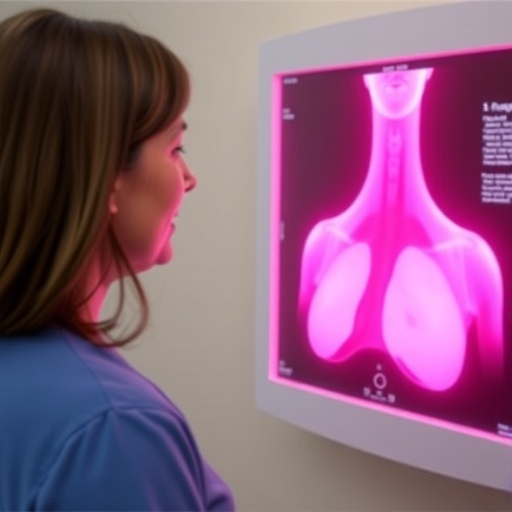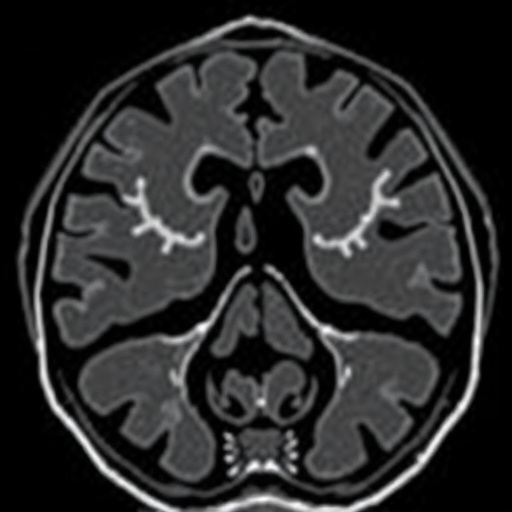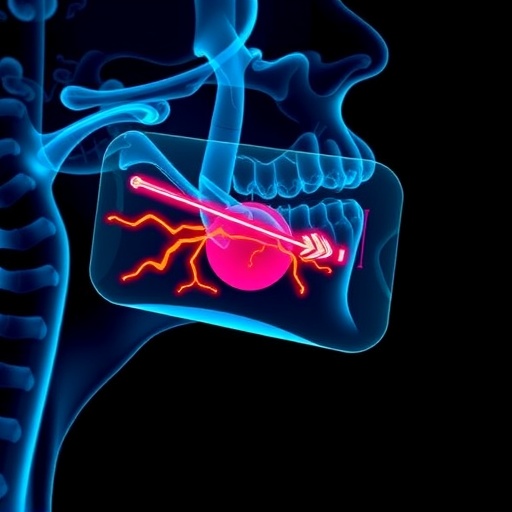In a groundbreaking study published in the prestigious journal Radiology: Imaging Cancer, a comprehensive analysis reveals that the method by which breast cancer is detected profoundly influences patient outcomes. This expansive investigation underscores the superiority of routine screening mammography over symptom-based detection, demonstrating that cancers identified through screening correlate with significantly improved clinical prognoses. These findings, emerging from a large patient cohort, underscore the critical importance of early breast cancer detection—particularly through structured, routine screening programs—in reducing mortality and improving the therapeutic trajectory for affected individuals.
Breast cancer remains one of the most significant health challenges globally, with early diagnosis recognized as a pivotal factor in successful treatment. However, despite widespread awareness, cancer registries across the United States and Canada do not consistently record the mode of cancer detection, limiting the ability to evaluate how detection strategies impact clinical outcomes. This study bridges that gap by retrospectively analyzing 821 breast cancer cases diagnosed in 2016 among women aged 40 and older, offering unprecedented insight into how detection methods translate into survival and treatment differences.
The pivotal distinction between symptom-detected and screening-detected breast cancers lies in the timing and biological characteristics of the tumors at diagnosis. Symptom-detected cancers, often identified following palpable masses or other clinical manifestations, tend to be detected at more advanced stages. In contrast, cancers identified during routine mammographic screening are frequently diagnosed at earlier stages, reflecting asymptomatic, potentially less aggressive tumor biology. This temporal advantage affords a broader spectrum of therapeutic options, often resulting in less invasive interventions and improved survival rates.
.adsslot_BUge421fuK{width:728px !important;height:90px !important;}
@media(max-width:1199px){ .adsslot_BUge421fuK{width:468px !important;height:60px !important;}
}
@media(max-width:767px){ .adsslot_BUge421fuK{width:320px !important;height:50px !important;}
}
ADVERTISEMENT
Quantitative analysis within this patient population reveals that just over half of the breast cancer cases (50.1%) were diagnosed following symptomatic presentation rather than screening. More strikingly, women aged 40 to 49 and those older than 75 disproportionately represented these symptom-detected cases, with symptomatic detection rates as high as 72.9% and 70.4% respectively. These age-related disparities highlight significant gaps in screening coverage and suggest potential missed opportunities for early intervention in vulnerable demographics.
Outcomes for screening-detected breast cancer patients were markedly favorable. The study delineates a statistically significant reduction in the likelihood of advanced-stage disease, a decrease in the necessity for mastectomy procedures, and a critically lower hazard ratio for mortality compared to symptom-detected cohorts. These findings provide compelling evidence that routine mammography not only enables earlier intervention but also substantially diminishes the aggressive treatment burden and improves long-term survival.
One of the most sobering revelations of the study revolves around the mortality rates within this cohort. Among the 821 patients studied, nearly 20% succumbed within an average follow-up period of just 6.7 years, with half of these deaths directly attributable to breast cancer. Furthermore, patients whose cancer was identified symptomatically demonstrated a 63% greater risk of mortality, emphasizing the lethal consequences of delayed diagnosis and highlighting screening’s role in enhancing survivorship.
The implications for public health policy and breast cancer screening protocols are profound. The authors advocate for the reduction of screening age thresholds to include women as young as 40, echoing recent updates from the United States Preventive Services Task Force (USPSTF) which now recommend biennial screening for women aged 40 to 75 at average risk. This policy shift contrasts with Canadian guidelines, which currently recommend screening initiation at age 50 through 74 every two to three years, underscoring potential areas for harmonization and enhancement.
From a mechanistic standpoint, the enhanced survival associated with screening-detected cancers can be attributed to the earlier identification of tumors before regional or distant spread, allowing for timely surgical interventions, targeted radiation, and judicious use of systemic therapies. This multifaceted approach inherently improves prognosis by capitalizing on cancer’s window of vulnerability at nascent stages.
Lead investigator Dr. Jean M. Seely, a respected radiologist and breast imaging specialist at the University of Ottawa, underscores the clinical ramifications of these findings. Her clinical observations spurred the investigation, revealing the pressing need to address gaps in screening coverage and optimize early detection strategies across age groups. Dr. Seely’s call to action advocates for not only lowering screening ages but also establishing cohesive, nationwide policies in Canada to streamline screening efforts and maximize patient benefit.
The study’s retrospective design, while robust, also acknowledges limitations in data granularity and the need for ongoing prospective research to further validate findings and refine screening intervals, technologies, and guidelines. Innovations in imaging modalities, including the integration of artificial intelligence in mammography interpretation, promise to enhance detection sensitivity and specificity, potentially transforming screening paradigms further in the near future.
In conclusion, this comprehensive evaluation underscores routine screening mammography as a critical determinant of favorable clinical outcomes in breast cancer. By shifting detection to an asymptomatic stage, screening dramatically reduces the burden of advanced disease, lessens the need for radical surgeries, and ultimately lowers mortality risk. As health systems evolve, these evidence-based insights compel a reevaluation and expansion of breast cancer screening protocols—particularly targeting younger and older women—to harness the full preventative potential of early detection and improve survival trajectories globally.
Subject of Research: People
Article Title: Impact of Method of Detection of Breast Cancer on Clinical Outcomes in Individuals Aged 40 Years or Older
News Publication Date: 30-May-2025
Web References:
Radiology: Imaging Cancer
Radiological Society of North America
RadiologyInfo.org
Keywords: Breast carcinoma, Mammography, Radiology
Tags: breast cancer screening benefitscancer detection methods impactclinical prognoses in cancer casesearly breast cancer diagnosis importancehealth challenges in breast cancer treatmentmortality reduction through early detectionpatient outcomes in breast cancerpatient survival rates breast cancerretrospective analysis of breast cancerroutine mammography vs symptom detectionscreening programs for breast cancertumor characteristics at diagnosis





